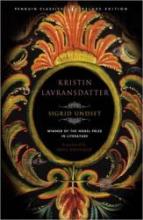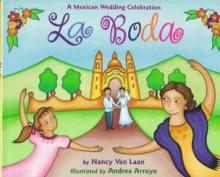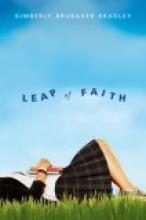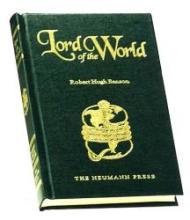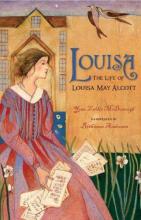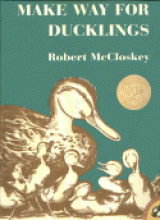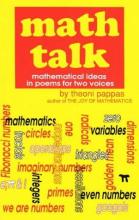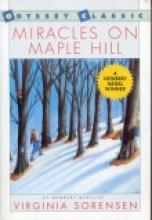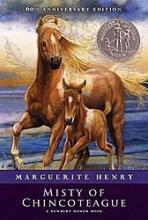Literature
Kristin Lavransdatter
In her great historical epic Kristin Lavransdatter, set in fourteenth-century Norway, Nobel laureate Sigrid Undset tells the life story of one passionate and headstrong woman. Painting a richly detailed backdrop, Undset immerses readers in the day-to-day life, social conventions, and political and religious undercurrents of the period. Now in one volume, Tiina Nunnally’s award-winning definitive translation brings this remarkable work to life with clarity and lyrical beauty. As a young girl, Kristin is deeply devoted to her father, a kind and courageous man. But when as a student in a convent school she meets the charming and impetuous Erlend Nikulaussøn, she defies her parents in pursuit of her own desires. Her saga continues through her marriage to Erlend, their tumultuous life together raising seven sons as Erlend seeks to strengthen his political influence, and finally their estrangement as the world around them tumbles into uncertainty. With its captivating heroine and emotional potency, Kristin Lavransdatter is the masterwork of Norway’s most beloved author—one of the twentieth century’s most prodigious and engaged literary minds—and, in Nunnally’s exquisite translation, a story that continues to enthrall.Seldom do we find such contrasting examples in quality of work as found in the two translations available of Undset’s master work. When we lived near Princeton, NJ, I was challenged to read the trilogy for a Catholic Woman’s Literary group at Aquinas House. My husband offered to buy it for me in Princeton on his way home, and in a good bookstore he found the then-brand-new translation by Tiina Nunnally. I had the opportunity to compare the old Archer translation of the 1930s, which has been continually in print since the 1920s, to this new one. For someone who studied translation in graduate school, this was exhilarating. While the new award winning translation by Nunnally flows in fresh, contemporary style, yet reflective of the historical period, the old one had forced medieval English-isms and felt dry and rusty. In further comparing I noticed that indeed Archer has left entire pages out of the volume—and most especially pages of deep Catholic content. (For readers who have read the second volume, one of the passages left out include the spiritual musings by the heroine upon her arrival at the shrine of St. Olaf during her penitential pilgrimage.) Indeed, the Penguin Classics web page comments:
This new translation by Tina Nunnally—the first English version since Charles Archer's translation in the 1920s—captures Undset's strengths as a stylist. Nunnally, an award-winning translator, retains the natural dialog and lyrical flow of the original Norwegian, with its echoes of Old Norse legends, while deftly avoiding the stilted language and false archaisms of Archer's translation. In addition, she restores key passages left out of that edition.Sigrid Undset converted to the Catholic Church while doing the research for this great historical novel. Daughter of a noted Norwegian archeologist, and fascinated by her father’s field of study, Undset looked to the past as the setting of her greatest novel. In the process of digging Norway’s medieval world she found Catholic Christianity and wholly embraced it. I believe this process of finding one's true meaning in life is behind the superb quality of the story. Some argue that her four volume novel The Master of Hestviken is a more Catholic book because the Christian thought is already present from page one. Maybe so. But alas, no other work by Undset work has the crisp freshness of Kristin Lavransdatter. Undset seems to transfer into her most memorable protagonist the exhilaration of her newfound faith, which caused no small token on her own personal life. As Kristin in the novel, Undset’s own decisions in life, now in the light of her newfound faith, caused many personal sacrifices as well providing the realities redemption and purpose. Again from the Penguin Classics page:
In Kristin Lavransdatter (1920-1922), Sigrid Undset interweaves political, social, and religious history with the daily aspects of family life to create a colorful, richly detailed tapestry of Norway during the fourteenth-century. The trilogy, however, is more than a journey into the past. Undset's own life—her familiarity with Norse sagas and folklore and with a wide range of medieval literature, her experiences as a daughter, wife, and mother, and her deep religious faith—profoundly influenced her writing. Her grasp of the connections between past and present and of human nature itself, combined with the extraordinary quality of her writing, sets her works far above the genre of "historical novels."Few novels are able to remain so wholly in the readers' memories as Kristin Lavransdatter. Sigrid Undset had a gift that is seldom found. This is a story to be savored a paragraph at a time, and a fascinating window into a world that is so foreign and yet it becomes so close in the imagination. Keeping in mind that this novel is best appreciated after the reader has experienced much of life’s vicissitudes, it is still recommended for the high school students. When our daughter read it at the end of freshman year I told her to take note of her impressions and to compare them with her impressions of when she rereads it—hopefully fifteen to twenty years from now. High school students could certainly benefit from reading Kristin Lavransdatter as an important sample of great Catholic fiction. The foreign flavor, in both style and cultural geography, is strongest in the first three chapters and can be a stumbling block, but a good reader will use those three initial chapters to fully immerse themselves into Kristin’s world. The story of love, romance, suffering and redemption will live in their memories. One of the great Catholic element of Kristin Lavransdatter is the lesson of life around which it revolves: because of her initial lack of trust and obedience to her beloved father, Kristin undergoes a lifetime of suffering and pain, finding consolation and redemption only under the shadow of the cross. Few books will teach such a crucial lesson this vividly. Of course, this is a lesson than can be learned at any stage of life, yet lessons are best learned in the formation years of our children. Kristin Lavransdatter is also the Women's Catholic Literary Club par excellence: a challenging yet deeply satisfying read, it could easily dominate an entire semester of meetings' discussions. If you have never hosted one of these, maybe this is the season to do it. Catholic homeschool mothers, I have noticed, enjoy great pleasure in discussing together their thoughts on great Catholic literature, most especially while enjoying a good Port.
The three volumes of this novel were originally published in 1920-22. Nunnally's English translation is copyright 2005.
Also available in this same translation from Penguin Books in three separate volumes.
La Boda: A Mexican Wedding Celebration
Leap of Faith
Why couldn't I believe that Jesus was the Son of God? All of a sudden I wanted to, more than anything. I wanted to be baptized and forgiven and blessed. I wanted to hold the Eucharist and realize that it really was the body of Christ. I wanted all that. I was wide awake again. I looked at my script. No answers there. I thrashed around for a while, trying to make my pillow more comfortable, and then I took another deep breath and followed Mrs. Brashares's advice. I talked to Jesus. In the middle of the night, I emptied everything out of my mind except this one thing, this wanting to believe. I held onto that. And then I talked to someone I didn't believe existed, someone I didn't believe could answer. "Jesus, I said, "I'd really like to believe." Nothing happened. No lightning, no clap of thunder. I didn't get knocked out of my bed the way Paul got knocked off his horse on the way to Damascus. I waited. I quieted my mind, shooed away all the thoughts of Paul and Mrs. Brashares and horses and Damascus and Ruthie and my parents. I started to feel sleepy again. Then I heard, quiet but clear like a tiny bell, an answer. Okay.*When in the first week of sixth grade Abigail gets herself kicked out of public school, her non-religious parents enroll her in Catholic school while warning the parish priest that they'd better not try to convert her. Angry that her parents don't listen to her, Abigail retaliates. First, by enrolling in drama instead of an academic elective and then by deciding to become Catholic. In drama class Abigail befriends Chris and finds freedom in putting on the characters she plays. And, although her Wednesday night "Catholic classes" begin as an act of rebellion, as Easter approaches Abigail begins to have qualms about accepting baptism when she doesn't believe in God. Those qualms lead her to ask questions and those questions lead to her leap of faith. There is no cheap grace in the novel. Abigail struggles with anger and forgiveness and mixed motives and until the very end she still has doubts. But she learns that struggling with doubts is a part of faith. The Catholics Abigail encounters are honest with her, willing to say 'I don't know,' and always gentle in allowing her true freedom of choice without coercion. They give her room to doubt but also encourage her gently to learn, to explore, to grow, all while making sure she knows that they won't think less of her if she decides not to go through with her baptism. I loved that Abigail's parents are not cardboard villains. Instead, they are overachieving professionals who in their drive for success have lost their ability to focus on their daughter. In the course of the novel they begin to try to refocus, even if they do so ineptly and with mixed results. In fact, all of the characters, even the bit players, feel human. None of them are reduced to stereotypes, with the possible exception of the bully who was responsible for Abigail's expulsion. But even there the situation is revealed to be more complicated than simply that of an evil bully and innocent victim. I also found it refreshing that Abigail's friendship with Chris is allowed to develop and deepen but never becomes anything more than friendship. Not all relationships between girls and boys need to be romantic and in fact I'd argue that in sixth grade none of them should be. I always cry at baptisms, especially at the Easter vigil and so it was no surprise that the end of the book found tears streaming down my face. Bradley captures the glory and awe of the vigil mass and the baptism perfectly through the eyes of the new convert who doesn't understand everything she sees and hears but who nevertheless gets what it's all about. Finally, I simply can't not share one of my favorite scenes-- favorite because of the way the heroine so nicely deflates one of my pet peeves: parents who pretend they don't want to impose belief on their children, all the while with the intention of keeping their children away from all faith:
"Am I baptized?" "No." My mother, who'd come into the room halfway through our conversation, answered. "You're not." "Why not?" My father heaved a dramatic sigh. My mother said, "Why would we, honey? It's not important to us. Plus, we decided it's wrong to impose any kind of religious beliefs on you. We wanted you to be able to grow up and choose for yourself." As soon as she said that, her mouth dropped open just a little bit. A-ha. The opening I needed. "Good," I said, "because now I'm grown up enough and this is my choice." It was the end of the argument, and we all knew it. Logic was the only god my father ever worshiped. And if I had any doubts about my plan to become Catholic-- any little worries over the fact that I didn't believe in God-- well, they pretty much faded away. Because the plan worked: Right then, I had my father's full attention. For the first time in years, he may have actually listened to me.** This review is based on a galley proof, an advance, uncorrected text, not the final, published version.
Lord of the World
The setting is a future society where the Catholic Church is no more than an embattled remnant. In the popular and intellectual view, culture has moved past the "need" for faith in the supernatural. Near the beginning of the book, two young priests discuss with their superior how to regain some Catholic foothold in a culture which has been de-sacramentalized; of the two, one goes over to the enemy's side, while the other will be hunted and scorned for his faith. The latter priest, Father Percy, a sort of focal point of the book, has the odd distinction of being physically almost identical to his counterpart, a mysterious international leader who has a more-than-human influence on the people he gathers around him. This anti-Christ figure is personable, not obviously evil, and seems in all ways more powerful than the fugitive priest - but as Christ's representative, Father Percy is ultimately victorious in the task he is called to carry out. Their physical resemblance seems to be a device to underline the contrast.
The contrast is also demonstrated in their respective influences on a married couple and the husband's mother, who are key characters in the book. The mother is drawn back towards the sacraments as she drifts closer to death while the attractive couple move from kind "tolerance" to active antagonism for the church and all it represents.
Modern humanitarian secularism eases into savage barbarism and the light of truth seems to flicker and die, but though the events are dark, the ending demonstrates that the battle has been won on a supernatural level even while lost by worldly standards.
I would probably save this book for an older high-schooler who is mature enough to distinguish between tenets of the faith and imaginative extrapolation. It might be quite interesting to read this book alongside some secular works in the same genre - Aldous Huxley's Brave New World, Orwell's 1984 and Animal Farm, or even some of the works of H.G. Wells. Another book written from a Catholic perspective, a science fiction post-apocalyptic classic from the 1950's, is Walter Miller's A Canticle for Leibowitz. One more book which deals with the effect of modernism on society is C.S. Lewis's That Hideous Strength, the last of his Space Trilogy. I could see these books being read as an introduction to modern worldviews in perhaps 11th or 12th grade.
Louisa
I love picture books and I love biographies... and I love it when both are combined successfully! This warmly illustrated picture book tells of the most beloved American author Louisa May Alcott. Her family was definitely sui generis, holding unusual beliefs and moving often, and Louisa began thinking and writing poetry at a very young age.
This picture book sheds light on what a noble soul Louisa had, filled of generosity, integrity and character. Highly recommended especially for young readers who love the wonderful Little Women author.
Make Way for Ducklings
Math Talk
I have long been a fan of the poems for two voices books by Paul Fleischman. This book puts a twist on the idea by covering math topics in poems. It's a really unique and engaging way to memorize a math concept, reciting it as a poem. A poem for two voices is a poem recited by two people where sometimes the same words are said in tandem, sometimes alternately, and sometimes, the speakers speak at the same time saying different things.
Here is a sample of part of a poem from the book: (The first column is the first speaker and the second column, the second - shown smaller than actual size) 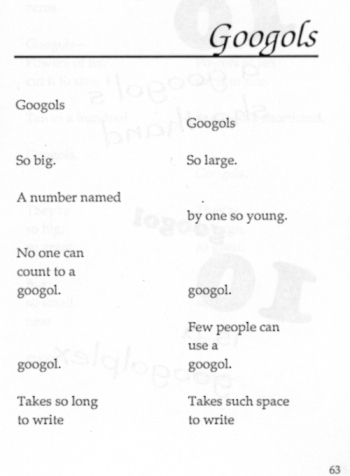
Some of the math concepts in the poems are fairly simple ideas that would pertain to a grammar school student, however most of the ideas are for middle schoolers or high schoolers. There were a few math concepts I had never heard of, such as fractals, (the geometry of nature), Fibonacci numbers (adding the last two numbers in a series to give the next number), and Mobius strips (circular strip with a twist in it).
While you don't learn everything you need to know about the math concepts in the poems, you get an introduction to the idea and the basic or interesting facts. For tessellations, the reader learns that not all figures tessellate; for triangles, the reader learns that the angles in the figure must equal 180 degrees. Some of the accompanying illustrations are also instructive. I could not have visualized the Mobius strip without the drawing of it.
This is a fun way to talk about these concepts. Trying to say the poems as a team takes a lot of concentration and brings a lot of laughs along the way. The book would make a great addition to a living math program or be a nice break from a formal textbook program.
Recommended for grades 4-12
Miracles on Maple Hill
Their mother had always spoken of Maple Hill and her grandmother's house that she and her brother had visited each summer as children. Her grandmother had been dead for 20 years, but Marly and Joe loved to hear stories of simple life in the country.
Their mother has a plan. Her grandmother's house has been unoccupied for years, but if they went there for a long visit, perhaps that would help her husband's troubles. And so, they pack their bags and head to rural Pennsylvania just in time for the sugar season...
This is a delightful story that embodies the human need for spending time with God's creation and the virtues of simple living. The writing is interesting and engaging, but not too hurried, with many details about how things are done on a farm (especially the sugar season), plant and animal life, etc.

